| Description | Participants | Summaries | Products |
|---|
Archived NIMBioS Working Group
Habitat for Migratory Species
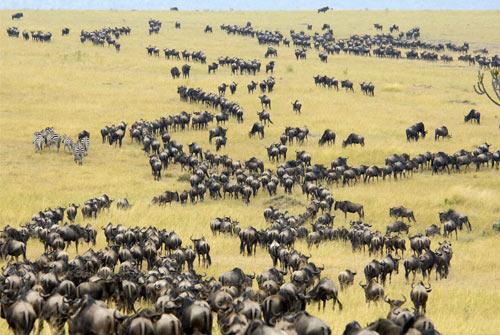
Topic: Estimating area-specific contributions to the population dynamics of migratory species
Meeting dates: May 5-8, 2014; January 26-29, 2015; July 20-23, 2015; May 10-13, 2016
Organizers:
Wayne Thogmartin, United States Geological Survey, Upper Midwest Environmental Sciences Center, La Crosse, Wisconsin
Jay Diffendorfer, United States Geological Survey, Geosciences and Environmental Change Science Center, Denver, Colorado
Ruscena Wiederholt, Univ. of Arizona, Tucson
Brady Mattsson, Univ. of Natural Resources and Life Sciences, Vienna, Austria
Objectives:
Migratory organisms spend portions of their annual cycle in locations separated by space. Understanding the value of specific areas used by a migratory species is important to theoretical ecology, decision analyses, habitat conservation, and conservation spending. Our working group objective is to define a comprehensive framework for estimating the contribution of discrete habitat areas for migratory population viability. While similar metrics have been defined in a metapopulation context, translating these ideas to migratory populations, which spend time in multiple habitats over the course of their annual cycle, poses challenges. For example, migratory species can have different migration patterns over the course of their life, areas may not be inhabited year-round, and there can be habitat-specific carry-over effects affecting survival and breeding once individuals have emigrated from these areas. Working group organizers are among the first to develop an explicit, spatial modeling framework estimating the relative importance among areas used by a migratory population. Our goal is to continue development and refinement of this generalizable framework for habitat-specific contributions that accounts for 1) various migratory patterns, 2) density-dependence, and 3) carry-over effects. We will also test this framework through sensitivity analyses and incorporate changing conditions into our modeling framework. Optimal spatial prioritization approaches identify robust strategies for reserve design. We will consider the consequences of area contribution for migratory species for identifying optimal reserve networks. Lastly, we will compare our results to other modeling techniques and will use three migratory taxa as case studies for this framework. These efforts will be useful for conservation and management activities for migratory species. The working group will include participation by statisticians, quantitative ecologists, and landscape ecologists with experience in metapopulation theory, parameter estimation, decision analysis, scenario analysis and population modeling.

Meeting Summaries
| Mtg # | Dates | Agenda | Summary | Photo | Evaluation |
|---|---|---|---|---|---|
| 1 | May 5-8, 2014 | Link | Report | ||
| 2 | Jan 26-29, 2015 | Link | Link | ||
| 3 | Jul 20-23, 2015 | Link | |||
| 4 | May 10-13, 2016 | Link |
Meeting 2 Summary. The three subgroups — 1) mathematics of network arrangements, 2) use of advection/diffusion equations, and 3) extension of metapopulation dynamics to a migratory setting — investigated the use of network and perturbation analyses to determine the importance of a specific habitat, the use of partial differential equations applied over 1-dimensional continuous space, and the finalized extension of a metapopulation model to a migratory setting. All subgroups plan to examine their specific models and approaches on a common case study to aid comparison.
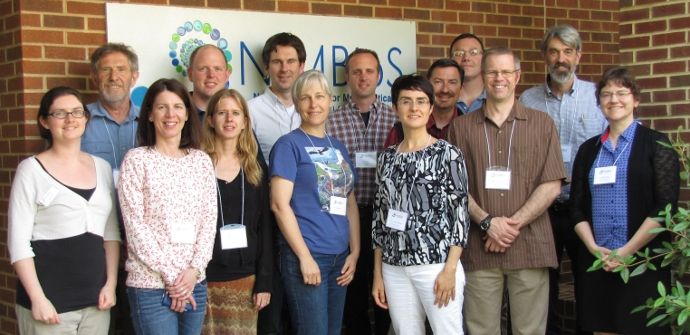 |
| Mtg. 1 participants: (Front, L to R) Julia Earl, Paula Federico, Ruscena Wiederholt, Jennifer Krauel, Laura Lopez-Hoffman, James Diffendorfer, Catherine Roberts; (Back, L to R) Gary McCracken, Richard Erickson, Ryan Norris, Brady Mattsson, Darius Semmens, Wayne Thogmartin, John Fryxell. |
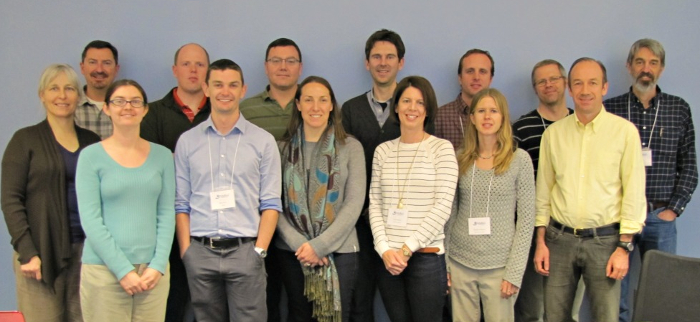 |
| Mtg. 2 participants (L to R) Jennifer Krauel, Darius Semmens, Julia Earl, Richard Erickson, Sam Nicol, Wayne Thogmartin, Joanna Bieri, Ryan Norris, Paula Federico, Brady Mattsson, Ruscena Wiederholt, James Diffendorfer, Michael Runge, John Fryxell. Not Pictured: Gary McCracken, K. Long. |
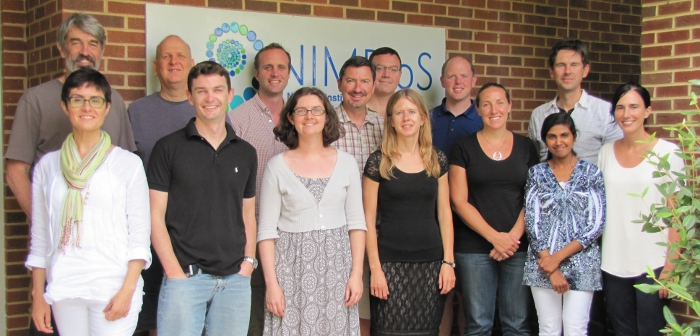 |
| Mtg. 3 participants (L to R): John Fryxell, Laura Lopez-Hoffman, K. Long, Sam Nicol, Brady Mattsson, Julia Earl, Darius Semmens, Wayne Thogmartin, Ruscena Wiederholt, Richard Erickson, Joanna Bieri, Chandani Dissanayake, Ryan Norris, Christine Sample. Not Pictured: Gary McCracken. |
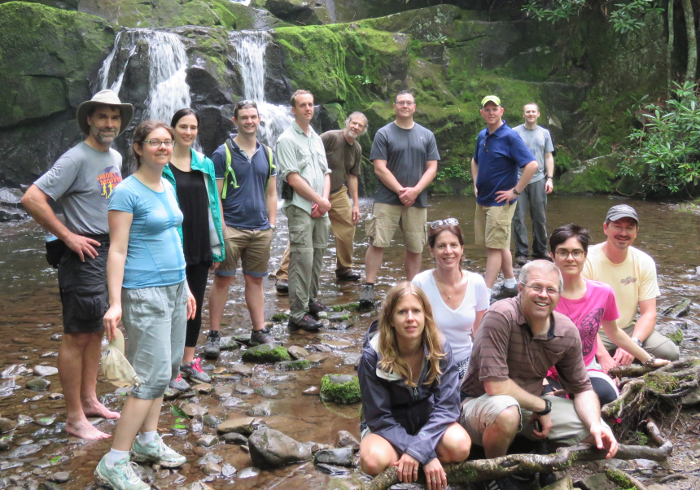 |
| Mtg. 4 participants (From left): NIMBioS Deputy Director and tour guide Chris Welsh, Julia Earl, Christine Sample, Sam Nicol, Brady Mattsson, Gary McCracken, Wayne Thogmartin, Richard Erickson, and Tyler Flockhart. Seated, from left, Ruscena Wiederholt, Paula Federico, Jay Diffendorfer, Laura Lopez-Hoffman, Darius Semmens. |
NIMBioS Working Groups are chosen to focus on major scientific questions at the interface between biology and mathematics. NIMBioS is particularly interested in questions that integrate diverse fields, require synthesis at multiple scales, and/or make use of or require development of new mathematical/computational approaches. NIMBioS Working Groups are relatively small (up to 10 participants), focus on a well-defined topic, and have well-defined goals and metrics of success. Working Groups will meet up to 3 times over a two-year period, with each meeting lasting up to 2.5 days.
A goal of NIMBioS is to enhance the cadre of researchers capable of interdisciplinary efforts across mathematics and biology. As part of this goal, NIMBioS is committed to promoting diversity in all its activities. Diversity is considered in all its aspects, social and scientific, including gender, ethnicity, scientific field, career stage, geography and type of home institution. Questions regarding diversity issues should be directed to diversity@nimbios.org. You can read more about our Diversity Plan on our NIMBioS Policies web page. The NIMBioS building is fully handicapped accessible.
NIMBioS
1122 Volunteer Blvd., Suite 106
University of Tennessee
Knoxville,
TN 37996-3410
PH: (865) 974-9334
FAX: (865) 974-9461
Contact NIMBioS


